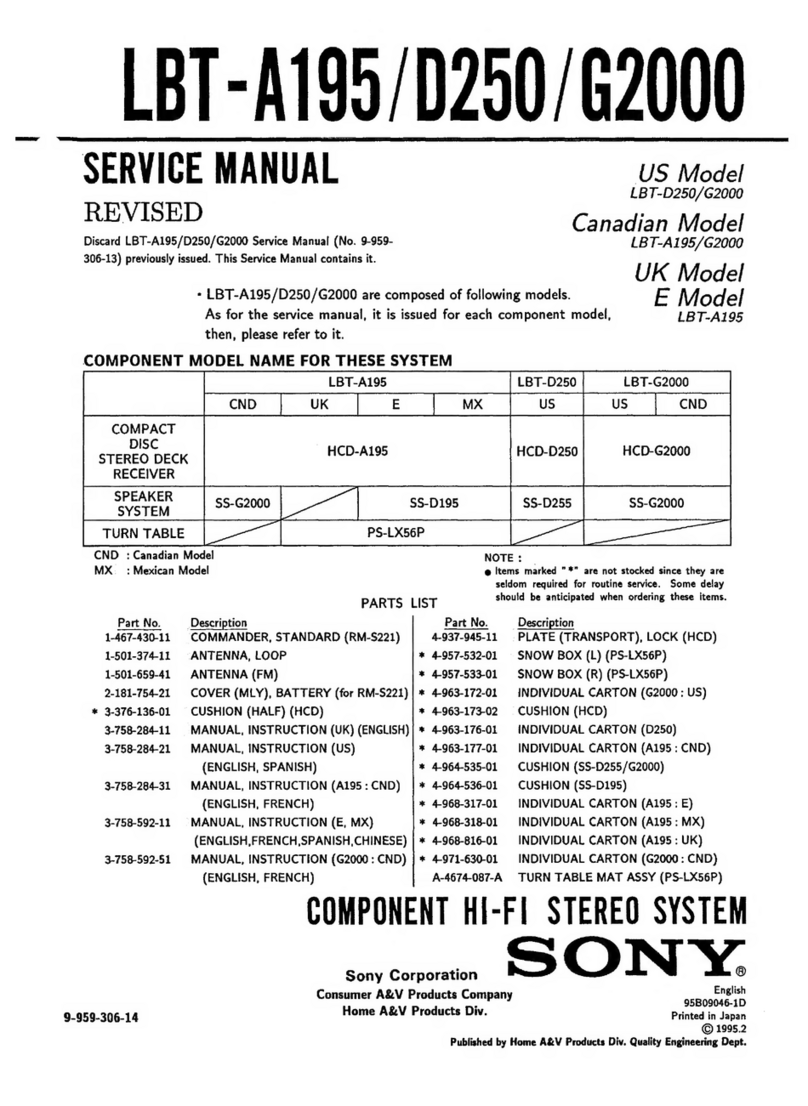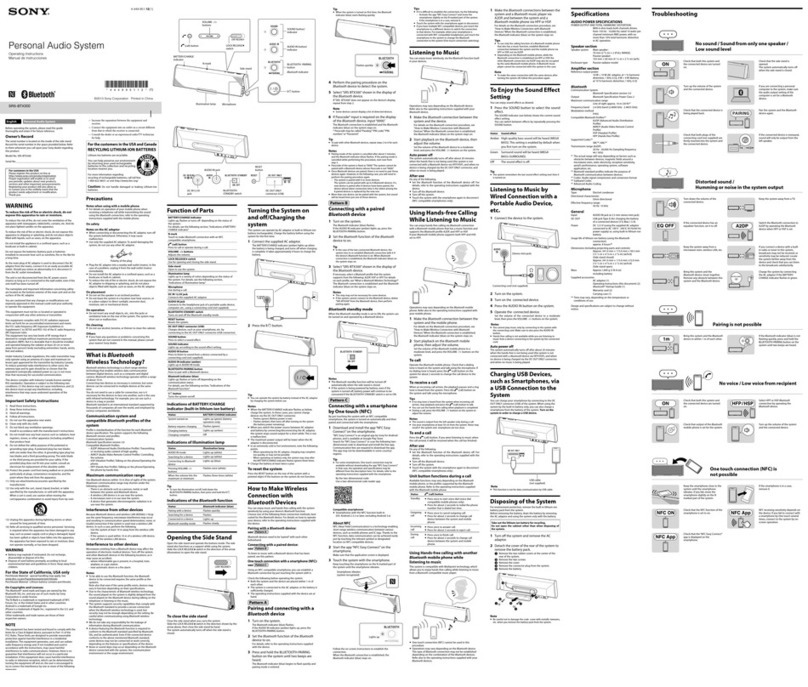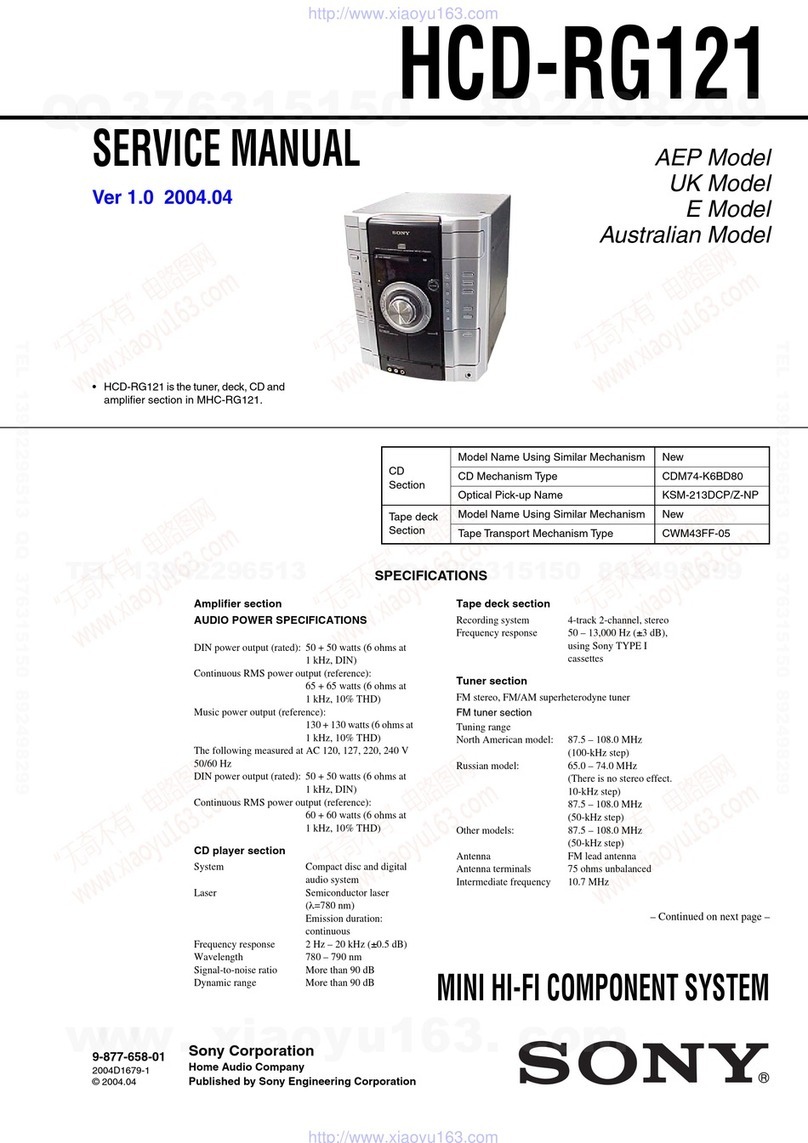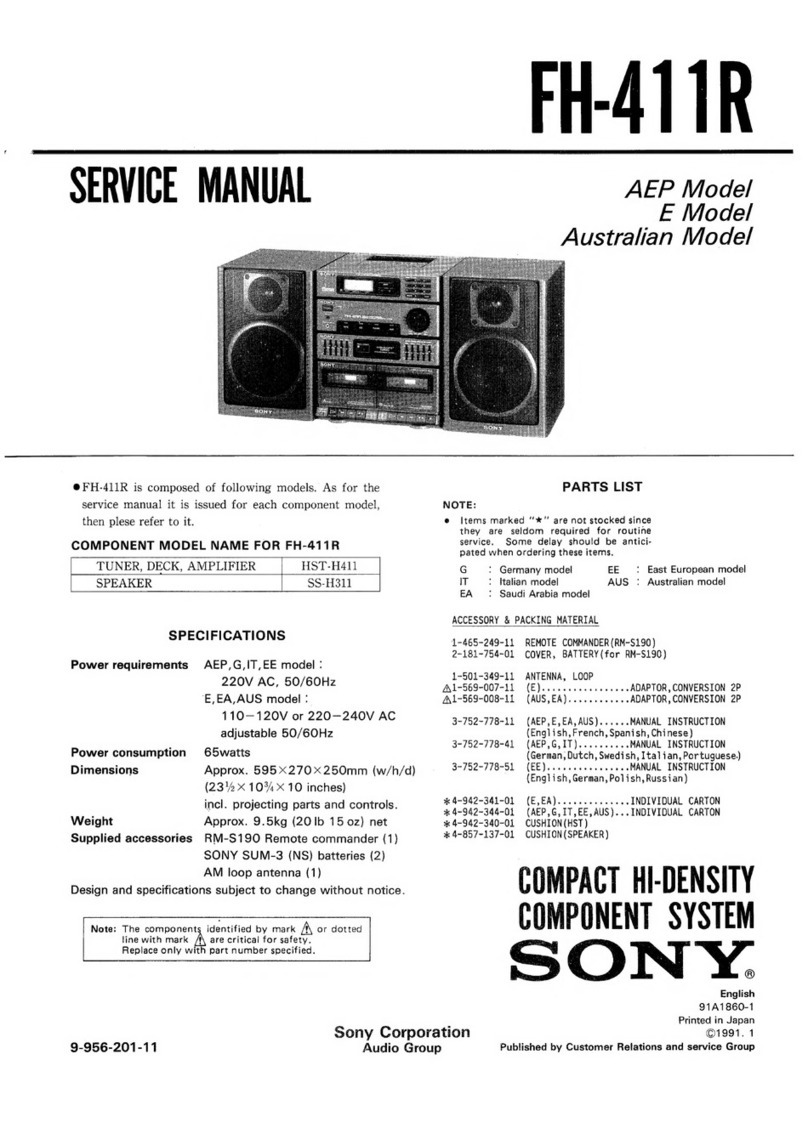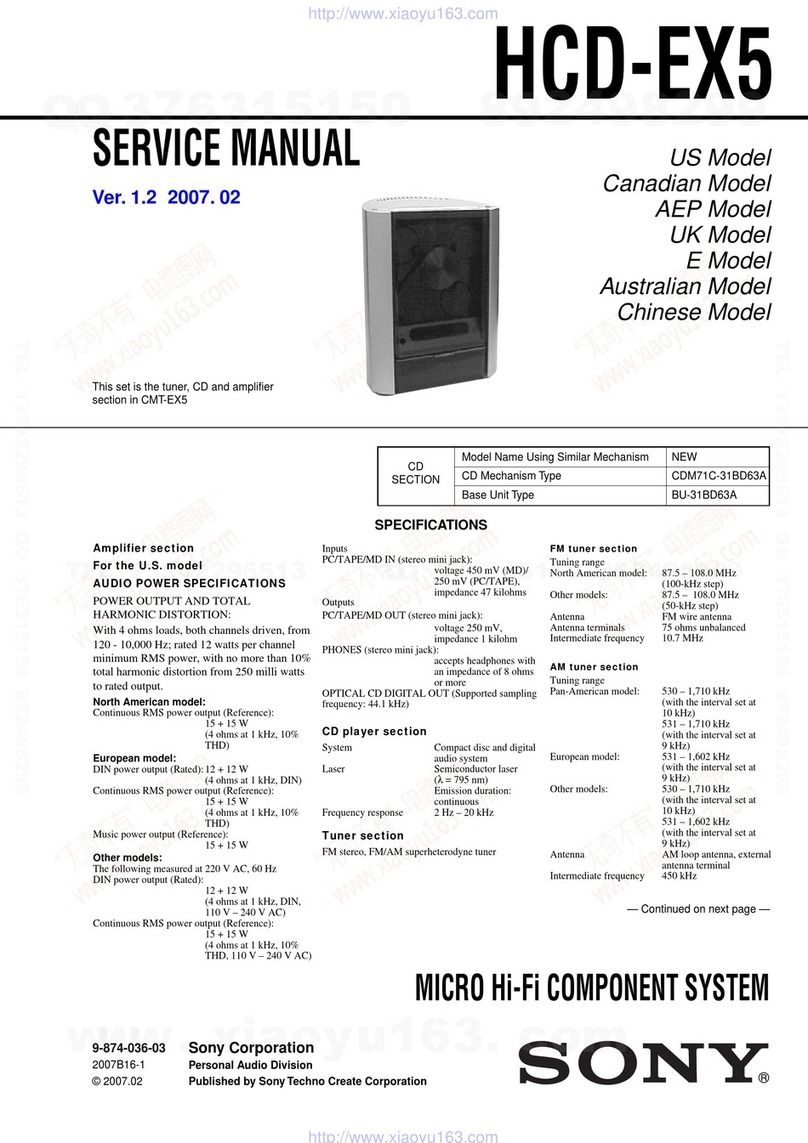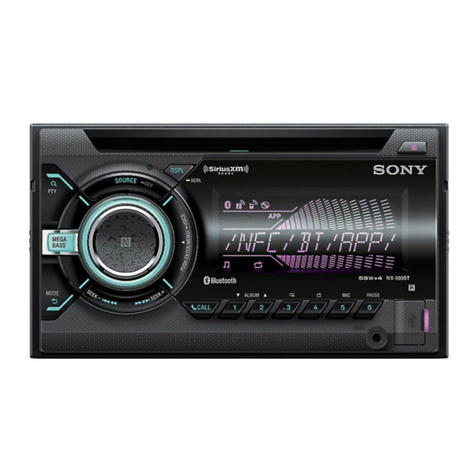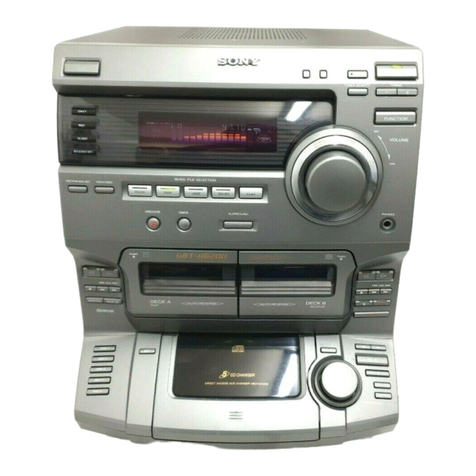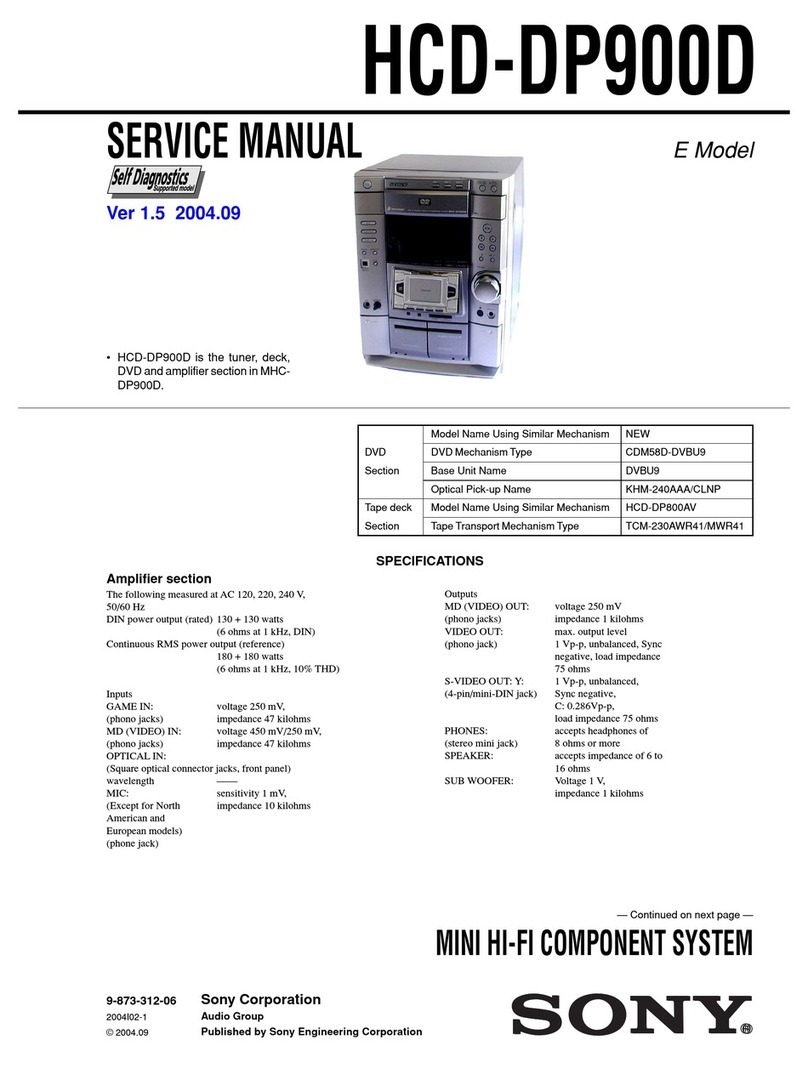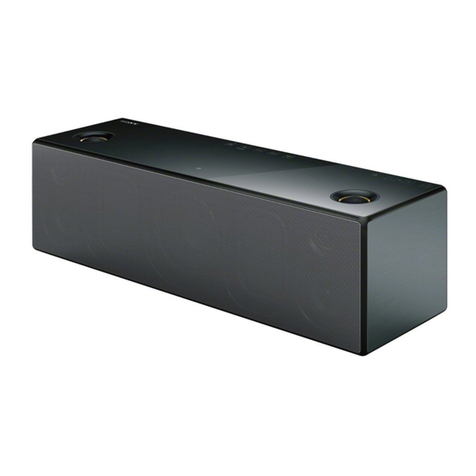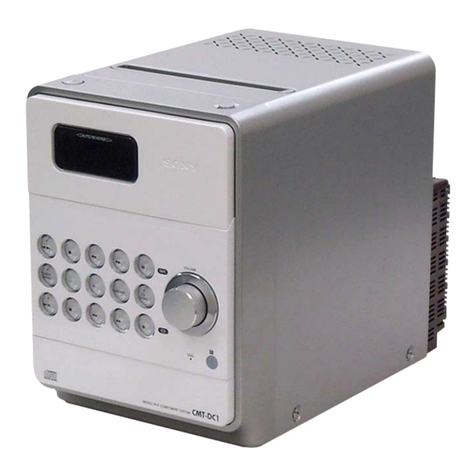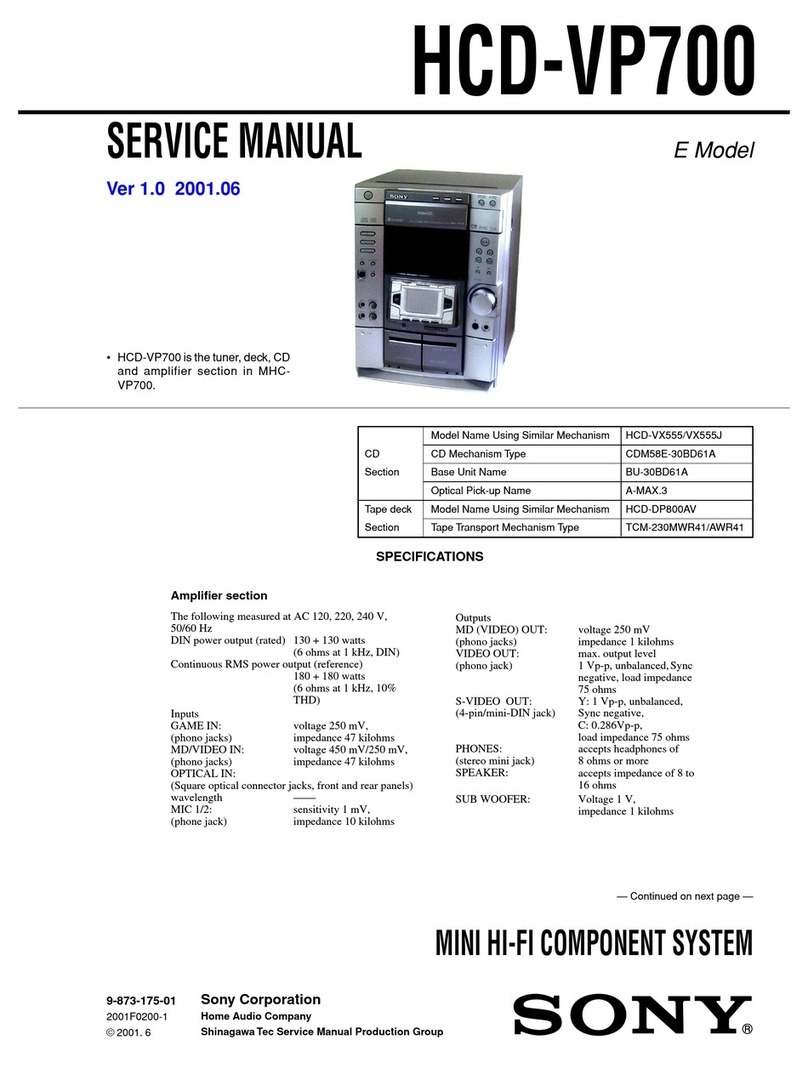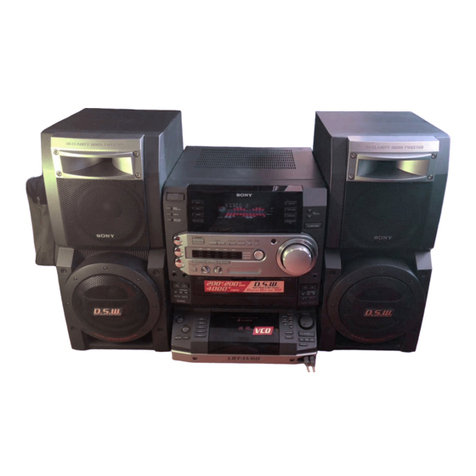5
TABLE OF CONTENTS
HCD-GTX88
1. GENERAL
Guide to parts and controls...................................................... 6
2. DISASSEMBLY
2-1. Case (Top) ......................................................................... 13
2-2. Loading Panel.................................................................... 13
2-3. Tuner Pack......................................................................... 14
2-4. CD Block Section.............................................................. 14
2-5. Front Panel Section ...........................................................15
2-6. Tape Mechanism Deck, Mic Board,
USB Connector Board....................................................... 15
2-7. Panel Board, Function Board, Jog Board.......................... 16
2-8. CD-SW Board ................................................................... 16
2-9. Cover (CDM) .................................................................... 17
2-10. Back Panel Section............................................................ 17
2-11. Power Board Section .........................................................18
2-12. Main Board ....................................................................... 18
2-13. Subwoofer Board, Power Board........................................ 19
2-14. Power Transformer (T1200).............................................. 19
2-15. BD91 Board ...................................................................... 20
2-16. Driver Board, SW Board, USB Board .............................. 20
2-17. Optical Pick-up ................................................................. 21
2-18. Sensor Board ..................................................................... 21
2-19. Motor (TB) Board ............................................................. 22
2-20. Motor (LD) Board .............................................................22
3. TEST MODE ..................................................................... 23
4. MECHANICAL ADJUSTMENTS ............................... 27
5. ELECTRICAL ADJUSTMENTS................................. 28
6. DIAGRAMS
6-1. Block Diagram — RF/Servo Section — ........................... 31
6-2. Block Diagram — Tape/Tuner Section — ........................ 32
6-3. Block Diagram — Main Section —.................................. 33
6-4. Block Diagram — USB Section — .................................. 34
6-5. Block Diagram — AMP/Subwoofer Section — ............... 35
6-6. Block Diagram — Display/Power Section — .................. 36
6-7. Circuit Boards Location .................................................... 37
6-8. Printed Wiring Board — BD91 Section — .......................40
6-9. Schematic Diagram — BD91 Section —..........................41
6-10. Printed Wiring Boards — Driver Section —..................... 42
6-11. Schematic Diagram — Driver Section —......................... 43
6-12. Schematic Diagram — Main Section (1/4) — .................. 44
6-13. Schematic Diagram — Main Section (2/4) — .................. 45
6-14. Schematic Diagram — Main Section (3/4) — .................. 46
6-15. Schematic Diagram — Main Section (4/4) — .................. 47
6-16. Printed Wiring Board — Main Section — ........................ 48
6-17. Printed Wiring Board — USB Connector Section — ....... 49
6-18. Schematic Diagram — USB Connector Section —.......... 49
6-19. Printed Wiring Board — USB Section —......................... 50
6-20. Schematic Diagram — USB Section — ........................... 51
6-21. Printed Wiring Board — Effector Section — ................... 52
6-22. Schematic Diagram — Effector Section — ......................53
6-23. Printed Wiring Board — Panel Section —........................ 54
6-24. Schematic Diagram — Panel Section — .......................... 55
6-25. Printed Wiring Boards — Function Section —................. 56
6-26. Schematic Diagram — Function Section — ..................... 57
6-27. Printed Wiring Board — PowerAmp Section — ............. 58
6-28. Schematic Diagram — Power Amp Section — ................ 59
6-29. Printed Wiring Board — Subwoofer Section — ............... 60
6-30. Schematic Diagram — Subwoofer Section —.................. 61
6-31. Printed Wiring Boards — Trans Section — ......................62
6-32. Schematic Diagram — Trans Section — .......................... 63
7. EXPLODED VIEWS
7-1. Main Section ..................................................................... 78
7-2. Front Panel Section (1)...................................................... 79
7-3. Front Panel Section (2)...................................................... 80
7-4. Front Panel Section (3)...................................................... 81
7-5. Chassis Section ................................................................. 82
7-6. CD Mechanism Section (1) ............................................... 83
7-7. CD Mechanism Section (2) ............................................... 84
8. ELECTRICAL PARTS LIST ........................................ 85


